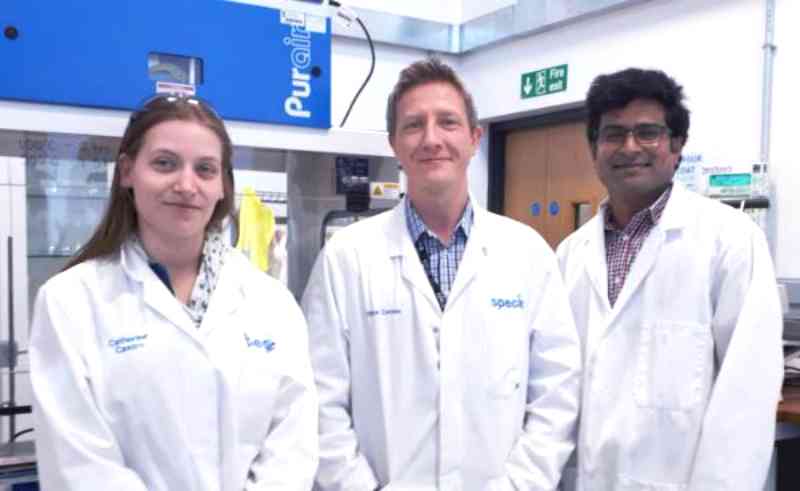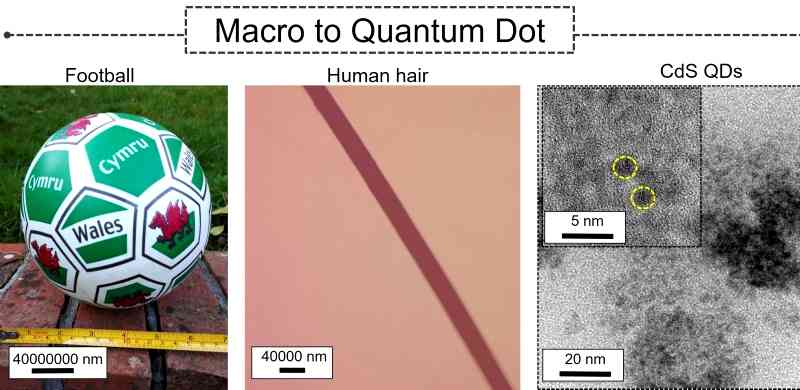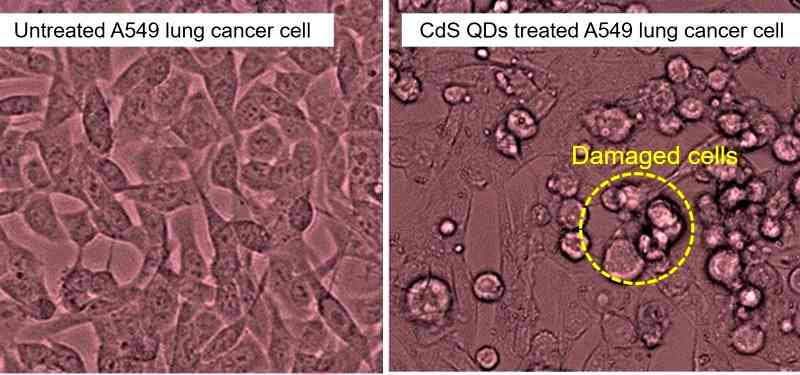Nanoparticles in Tea Leaves Destroy Lung Cancer Cells, Indian Scientists Discover


By Carl Samson
May 22, 2018
Nanoparticles derived from tea leaves destroy up to 80% of lung cancer cells, according to a new study.
Researchers from Swansea University (UK), KSR Institute of Technology (India) and Bharathiar University (India) refer to the nanoparticles as “quantum dots,” which measure less than 10 nanometers — about 50 atoms. In comparison, a strand of human hair is 40,000 nanometers thick.
The researchers were testing tea leaves as an alternative method of producing quantum dots, which can be made chemically, when they discovered that the nanoparticles penetrated the nanopores of cancer cells and destroyed up to 80% of them.
They produced quantum dots by mixing Camellia sinensis leaf extract with cadmium sulphate and sodium sulphide and allowing the solution to incubate.

Producing quantum dots chemically is both a complicated and expensive process. It also yields toxic side effects.
On the other hand, using tea leaves proved to be simpler, cheaper and had less toxic side effects, the researchers said.
“The main reason we started looking at tea leaves is that chemically synthesised quantum dots cost between £250 ($335) and £500 ($670) per microgram, whereas organically-derived ones can be manufactured for £10 ($13) per microgram, and at the same time they don’t poison healthy cells surrounding the cancer,” lead author Dr. Sudhagar Pitchaimuthu (Swansea University) told BBC.
He added, “They had exceptional fluorescence emission for cancer cell bio-imaging, but the cherry on the cake was finding the cells were dying off and weren’t able to replicate themselves.”

Still, the fact that the quantum dots inhibited the growth of cancer cells came as a surprise.
“The real surprise, however, was that the dots actively inhibited the growth of the lung cancer cells. We hadn’t been expecting this,” said Dr. Pitchaimuthu. “Quantum dots are therefore a very promising avenue to explore for developing new cancer treatments.”
While nanoparticles have been around for some time, scientists are paying attention to quantum dots only recently. But from LCD screens to cancer tumors, these nanoparticles are already showing promising applications.
For now, the team is looking forward to collaborate for further research. Developing quantum dots as a commercial cancer treatment, after all, could be years away.

Nonetheless, they are keen on developing a “quantum dot factory” to enable more observations. Dr. Pitchaimuthu shared:
“Building on this exciting discovery, the next step is to scale up our operation, hopefully with the help of other collaborators. We want to investigate the role of tea leaf extract in cancer cell imaging, and the interface between quantum dots and the cancer cell.
“We would like to set up a ‘quantum dot factory’ which will allow us to explore more fully the ways in which they can be used.”
“We would like to set up a ‘quantum dot factory’ which will allow us to explore more fully the ways in which they can be used.”
The study, titled “Green-Synthesis-Derived CdS Quantum Dots Using Tea Leaf Extract:Antimicrobial, BioImaging and Therapeutic Applications in Lung Cancer Cells,” was published in the journal Applied Nano Materials.
Featured Image: Camellia sinensis via Flickr / 영철 이 (CC BY-SA 2.0)
Share this Article
Share this Article